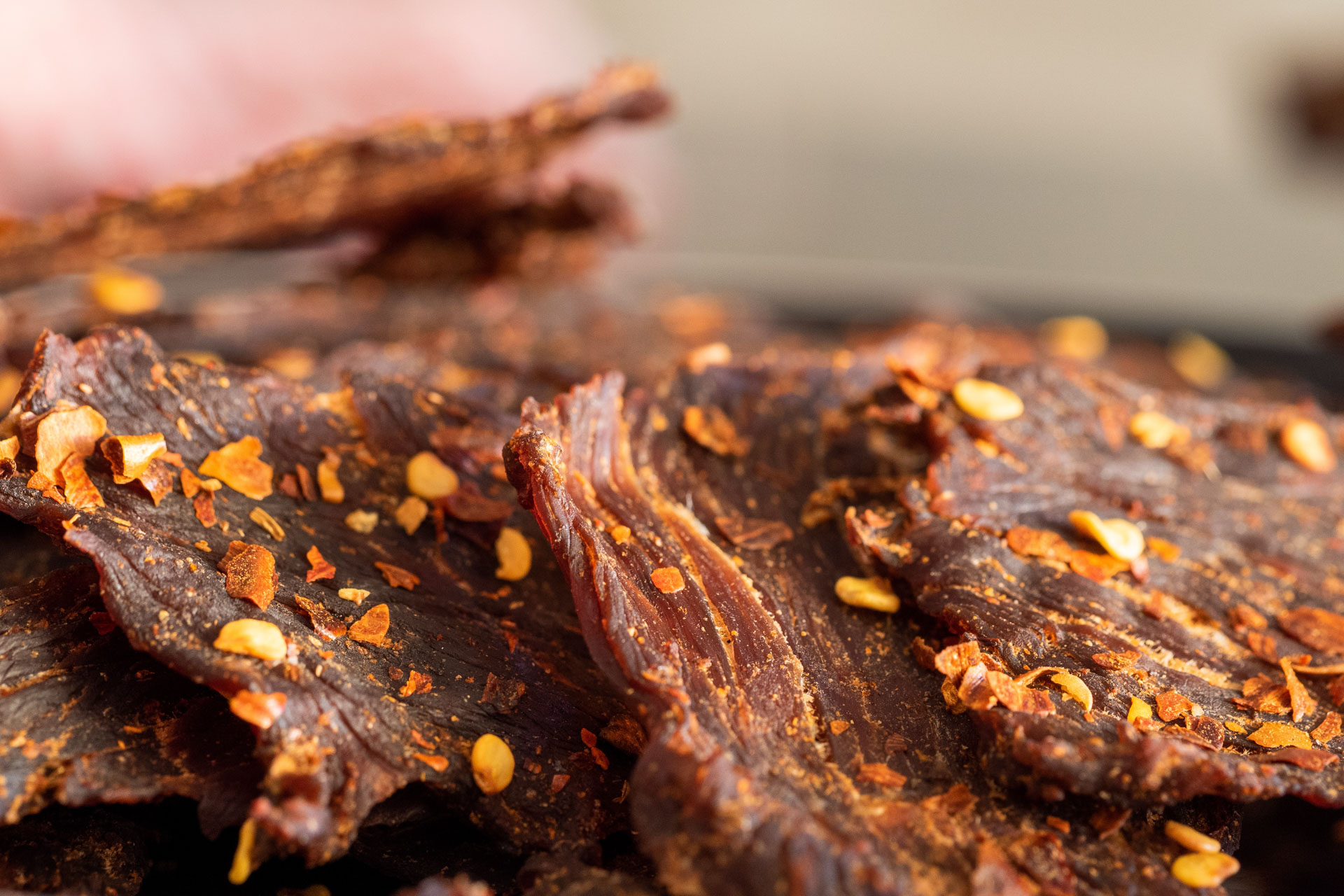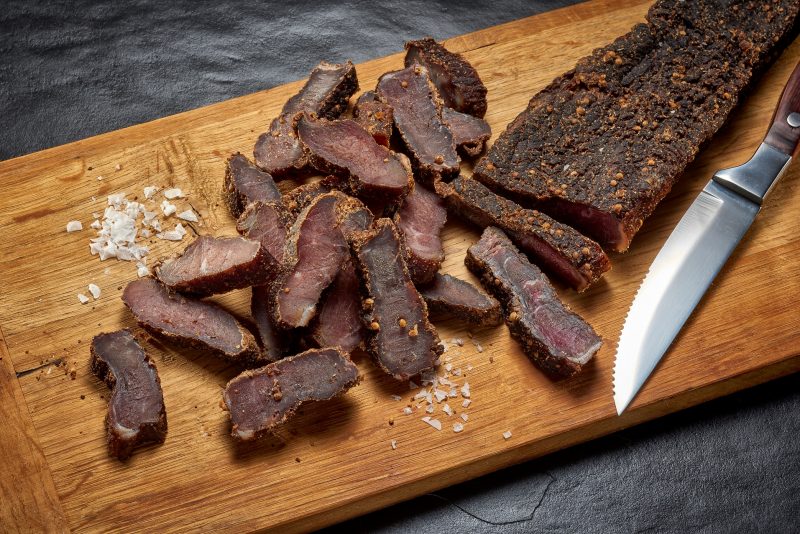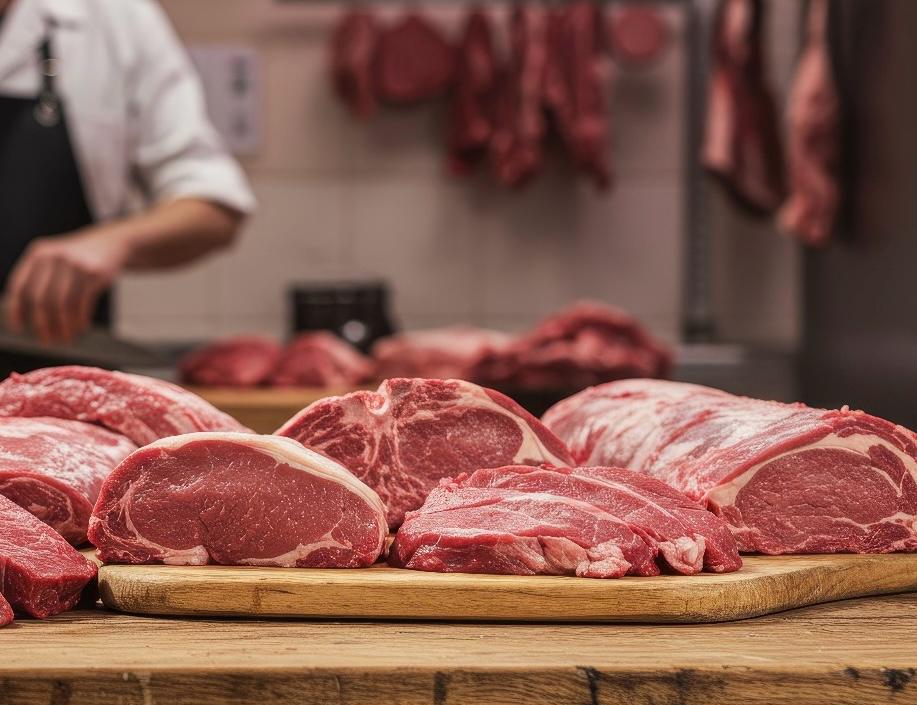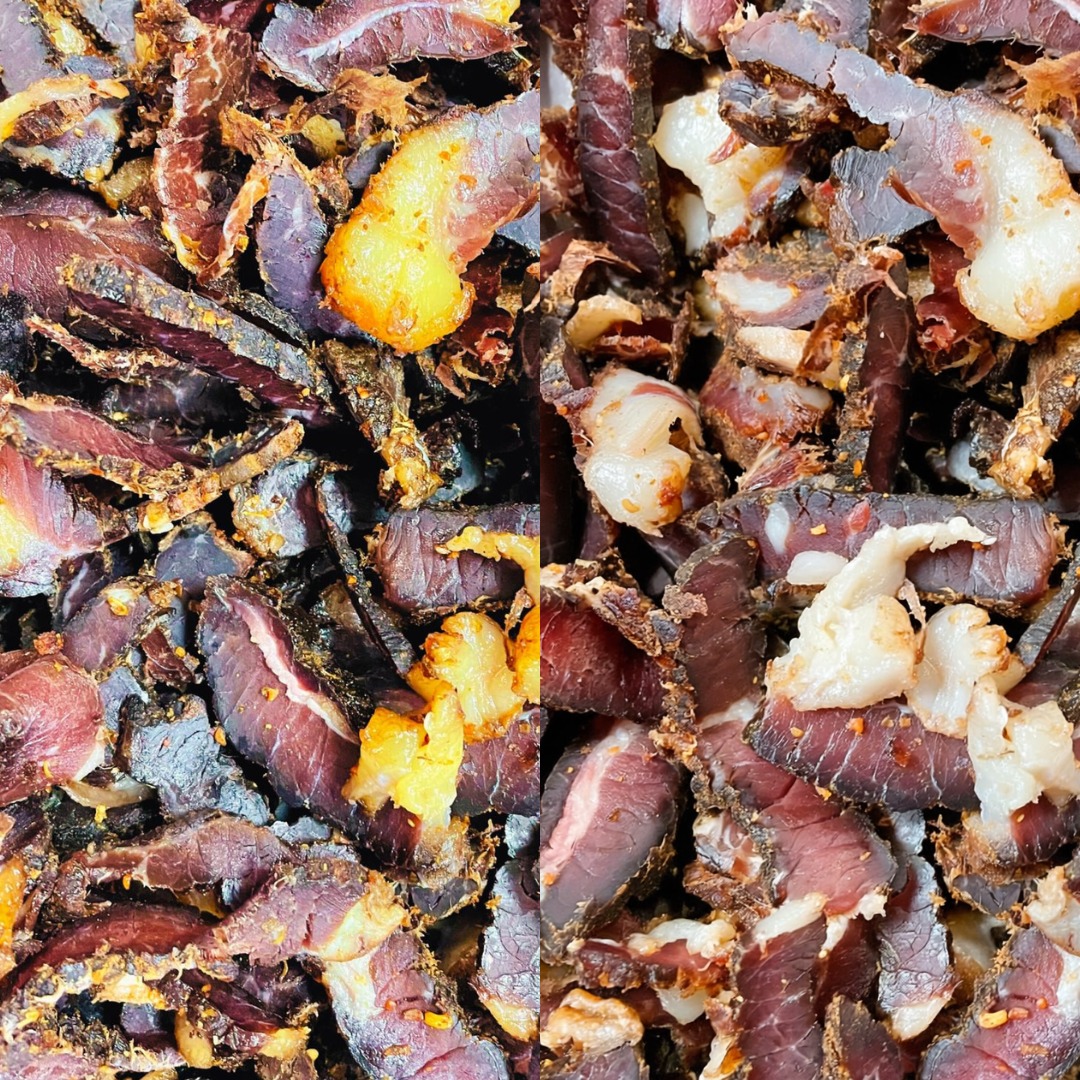Yellow Fat vs White Fat – Why Grass-Fed Beef Makes the Best Biltong
When it comes to making authentic biltong, one detail stands out above the rest: yellow fat. South Africans know it well, and expats around the world—from the UK to New Zealand, Australia, Canada, Argentina, Dubai, and even Texas in the USA—still ask their butchers for it.
What Is Yellow Fat?
Yellow fat is a natural result of grass-fed beef. Cattle grazing on open pastures build up carotenoids, which give their fat a golden colour. The fat is firmer, richer, and carries more flavour into the meat as it dries.
In contrast, white fat comes from grain-fed or feedlot cattle. It’s softer, waxier, and doesn’t offer the same deep taste when used in biltong.
Why Yellow Fat Makes Better Biltong
• Flavour: Yellow fat has a nutty, buttery richness that balances coriander, pepper, and vinegar.
• Texture: It firms up beautifully when dried, while white fat can stay greasy.
• Heritage: For South Africans, yellow fat tastes like home—it’s the flavour of traditional biltong.
A Global Biltong Tradition
• South Africa: The birthplace of biltong, where yellow fat is the gold standard.
• New Zealand: Producing only grass-fed beef, NZ offers some of the best meat for biltong.
• Australia & Argentina: Wide pastures produce beef with strong yellow fat flavour.
• UK & Canada: Expats keep the tradition alive, searching out grass-fed cuts for biltong.
• Dubai & USA (Texas): Growing communities of biltong lovers, embracing grass-fed beef in new settings.
Keeping It Authentic
At Kalahari Khabu, we design our biltong chambers and slicers to honour this tradition. Grass-fed beef deserves the right equipment, so whether you’re in Cape Town, London, Sydney, Toronto, Dubai, or Houston, you can make biltong the way it’s meant to be: with yellow fat, rich flavour, and heritage intact.






